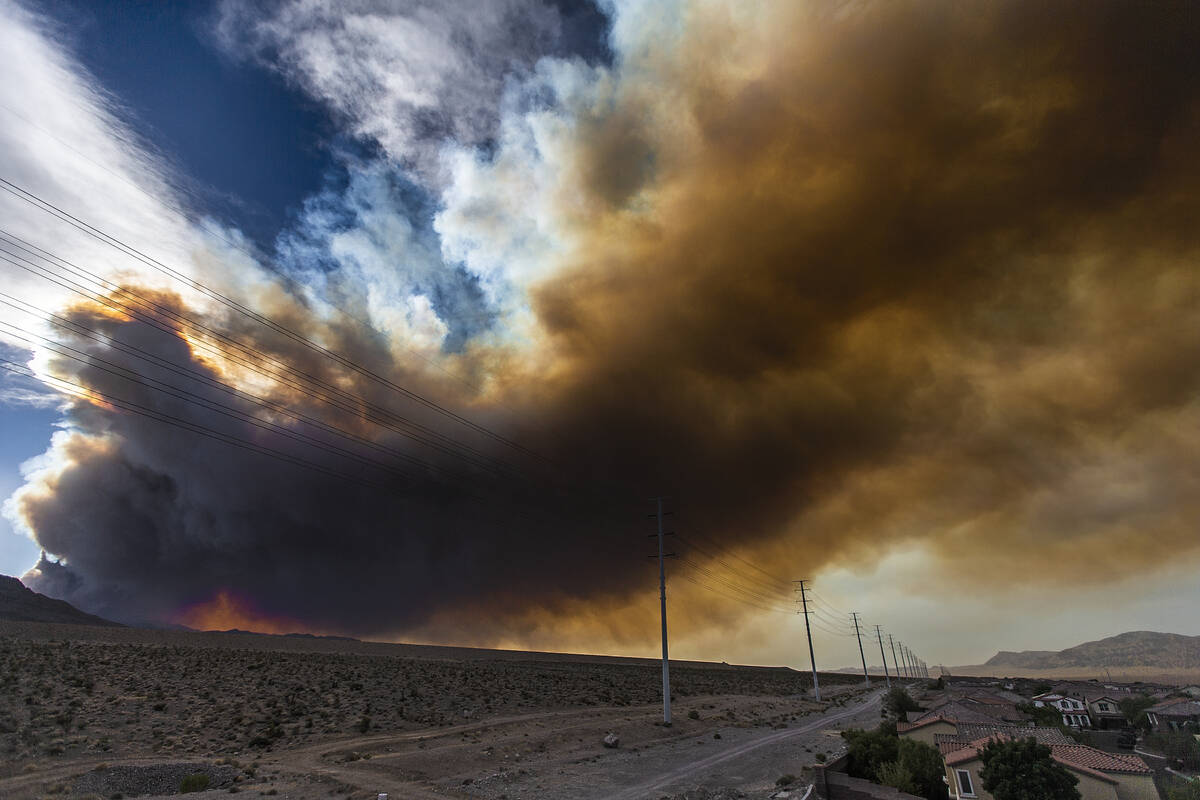Fire is catching in Nevada. Climate change is a major cause, scientists say

The start of sweltering desert summer and three-digit temperatures in Las Vegas signals the beginning of something unpredictable: wildfire season.
In the arid West, dry and hot conditions align every year, prompting sprawling wildfires that can be hard to contain. About 90 percent of them are caused by human activity, whether that’s target shooting, improperly discarded cigarettes or an unattended campfire, according to the the Western Fire Chiefs Association.
Nevada could have more wildfires than normal this year, experts and forecasts say, and new research shows that the state’s number of days with conditions favorable to fire will only snowball over time because of climate change. And just this week, Las Vegas saw its first large-scale wildfire of 2024 as more than 100 acres of Red Rock Canyon National Conservation Area went up in smoke over several days.
Current National Weather Service projections place above-normal fire conditions for June near Las Vegas and just northwest of city limits. July’s forecast foretells fire danger further north, east of Reno and in much of the northeastern corner of the state by Elko.
“The season is off to a late start because, in the West, we’ve had a wetter winter,” said Molly Hunter, head of the Bureau of Land Management’s Joint Fire Science Program. “But that doesn’t mean we can rest on our laurels.”
Vegetation a recipe for fire disaster
Two back-to-back years of decent snowpack have offered at least a momentary reprieve from Southwestern drought.
But it’s also presented a concerning fire hazard for Nevada. More rain means an abundance of cheatgrass — a highly flammable, non-native plant that forecasters have found could make sagebrush areas more vulnerable to fire.
“It dries out really quickly in the summer, creating a flammable fuel bed that makes it really easy for fire to spread,” Hunter said.
At the scene of what the BLM called the Bird Springs Fire at Red Rock, Southern Nevada district fire prevention specialist Shane Kelly echoed Hunter’s assessment of cheatgrass’s ability to roil fire danger.
Southern Nevada’s fire season generally starts earlier in the year than Northern Nevada’s, he said, but it’s important for land management agencies to remain vigilant all summer.
“We’re expecting to have a much busier season than last year,” Kelly said.
More fires bound for Nevada
So-called “fire weather days” — where hot, dry and windy conditions allow for wildfires — may only grow in number. That’s largely because of climate change. As the planet warms, scientists believe fire danger in Nevada is intensifying in tandem.
A study released in May from Climate Central shows that Las Vegas has, on average, experienced 17 more fire weather days every year from 1973 through 2022. Other portions of the state are even worse off: North of Las Vegas, a study area that encompasses central Nevada up to the California border saw a 57-day average increase during that period.
John Abatzoglou, a climatology professor from University of California, Merced, said there’s a direct tie between rising temperatures and more fire weather days.
Climate-change-fueled drought is drying out Nevada and the West, too, leading to a decrease in humidity, he said.
“If you have that many more days with conditions that are conducive to a fire becoming a large fire, the odds are you’re stacking the deck for these fires to occur,” Abatzoglou said.
Tips for a fire-free summer
Up in Mount Charleston’s Humboldt-Toiyabe National Forest, U.S. Forest Service fire prevention officer Ray Johnson said land management agencies like the BLM and the National Park Service will share staff and resources with one another when fire risk peaks during the summer.
To stop fires from catching, there are simple ways for Nevadans to stay safe this summer, Johnson said.
Fires started by target shooting, like Monday’s Bird Springs Fire, are increasingly common, he said. Having a water bucket and a shovel handy can prevent the spread of a fire if one starts from target shooting in particular.
Disposing of cigarettes properly, Johnson said, is another common-sense measure. People should closely tend to campfires and refrain from parking their cars in grassy areas, he added.
“Fire season is here in Southern Nevada,” Johnson said. “What happened Monday (at Red Rock) is an indicator.”
Contact Alan at ahalaly@reviewjournal.com. Follow @AlanHalaly on X. Staff writer Estelle Atkinson contributed to this report.